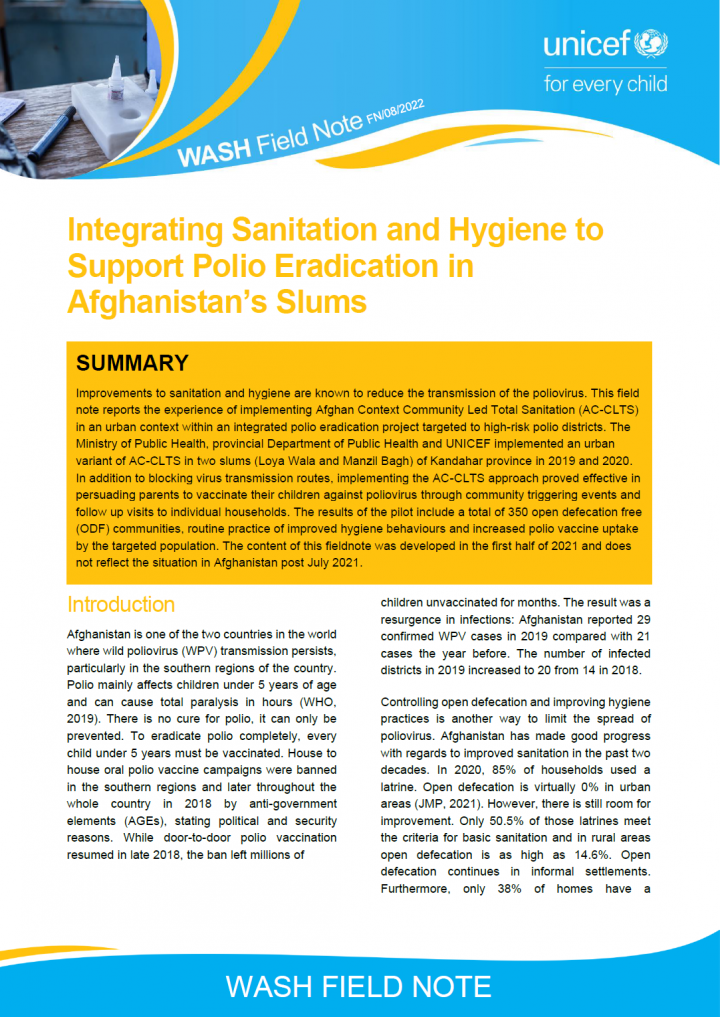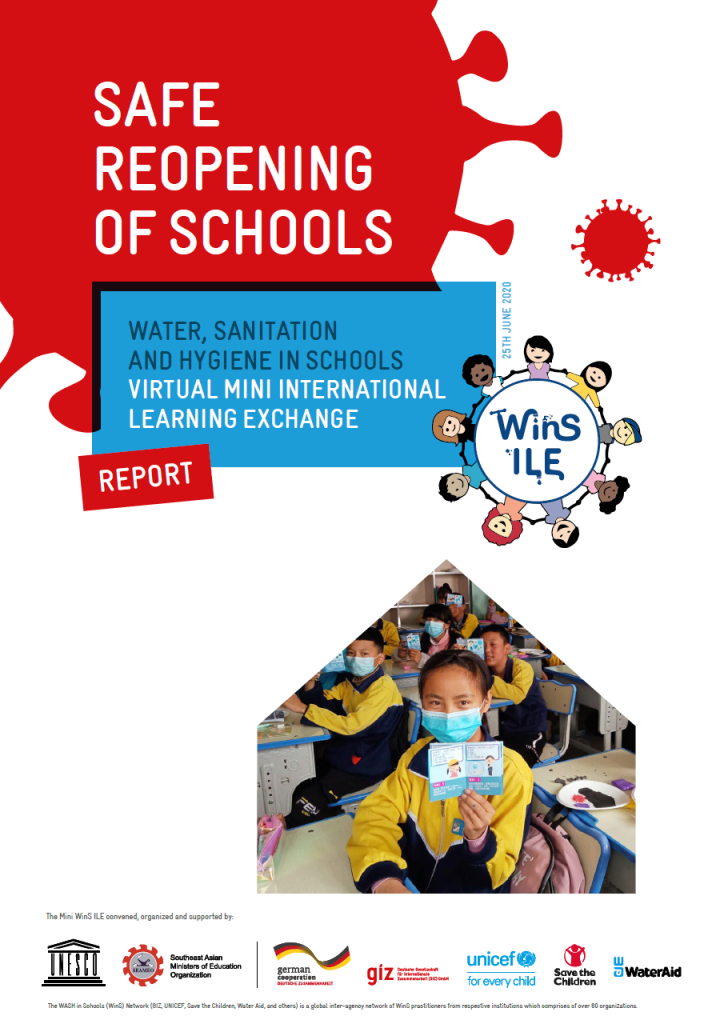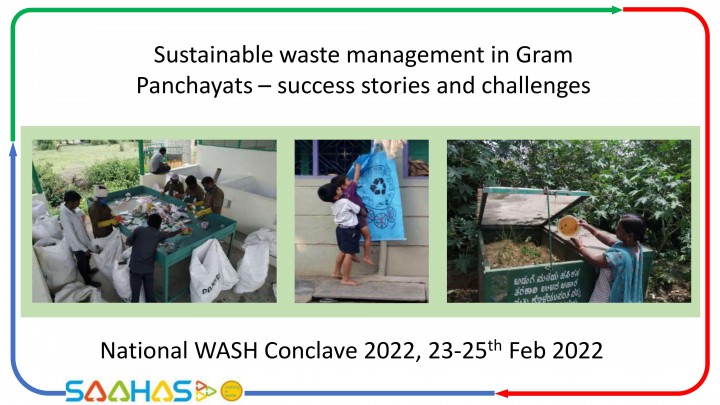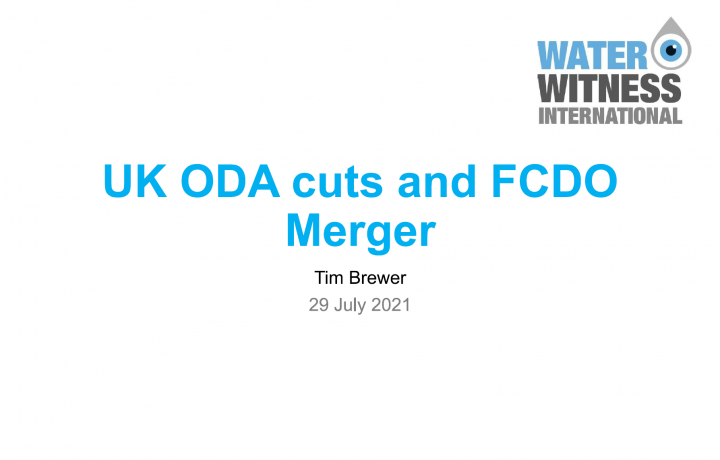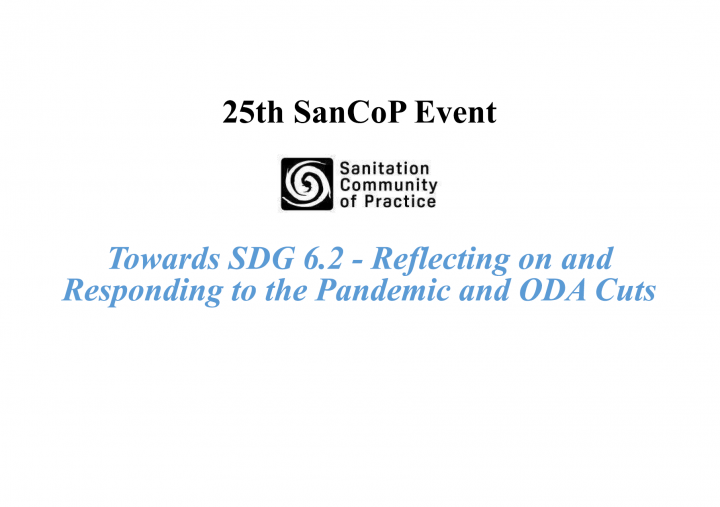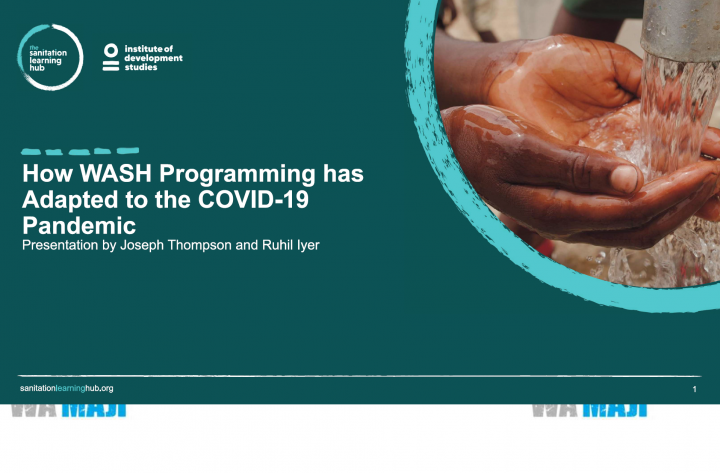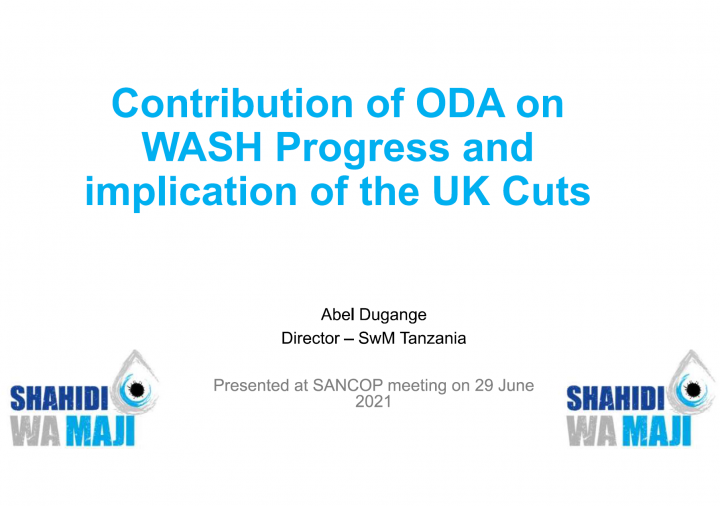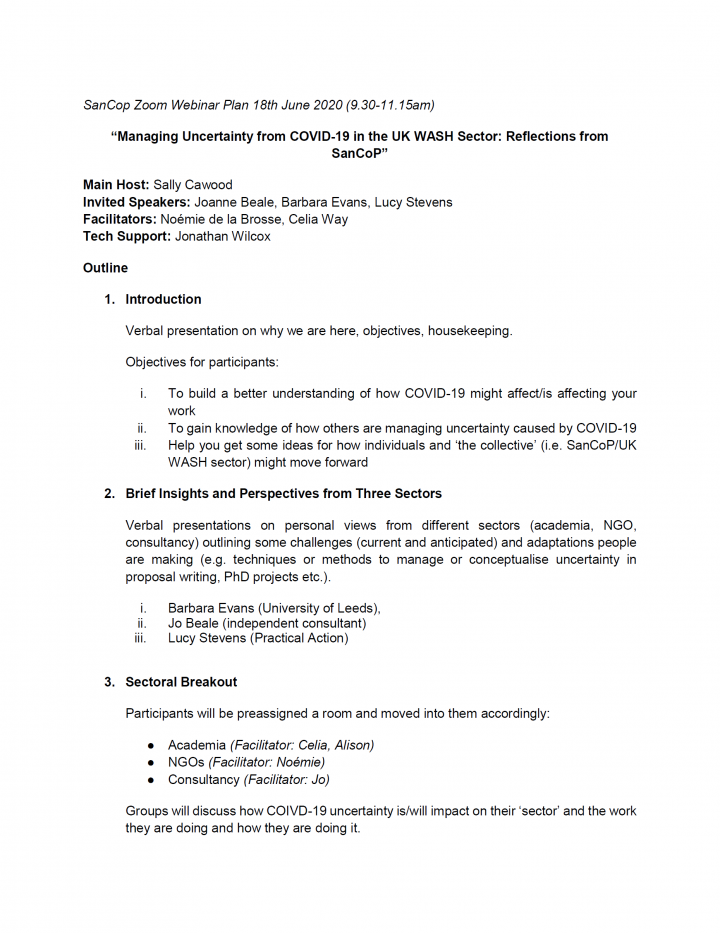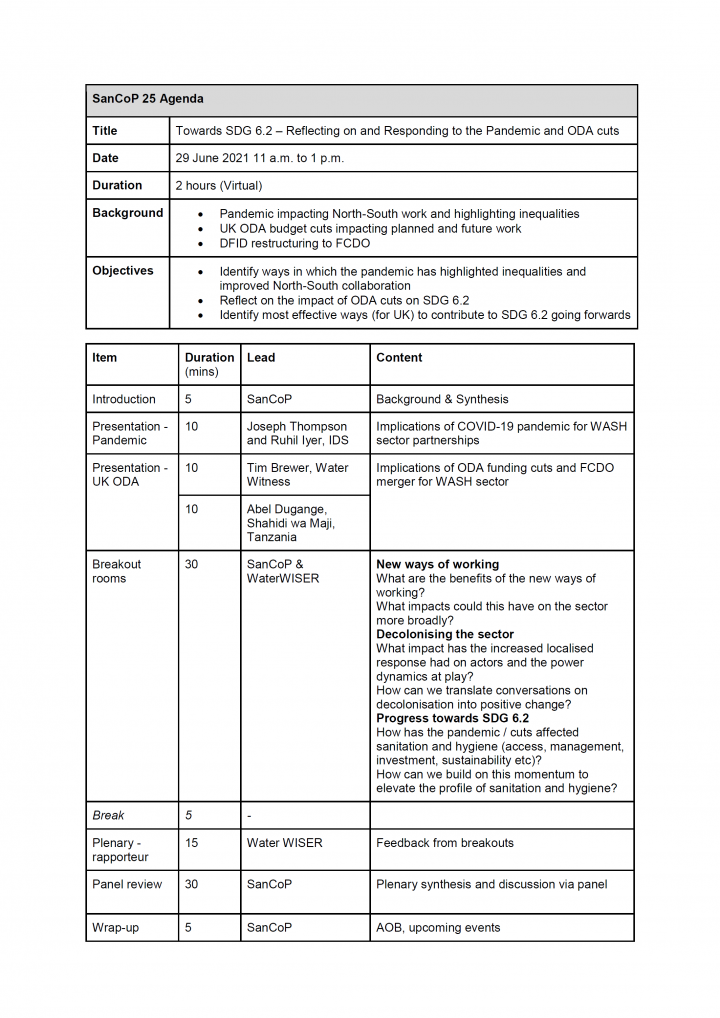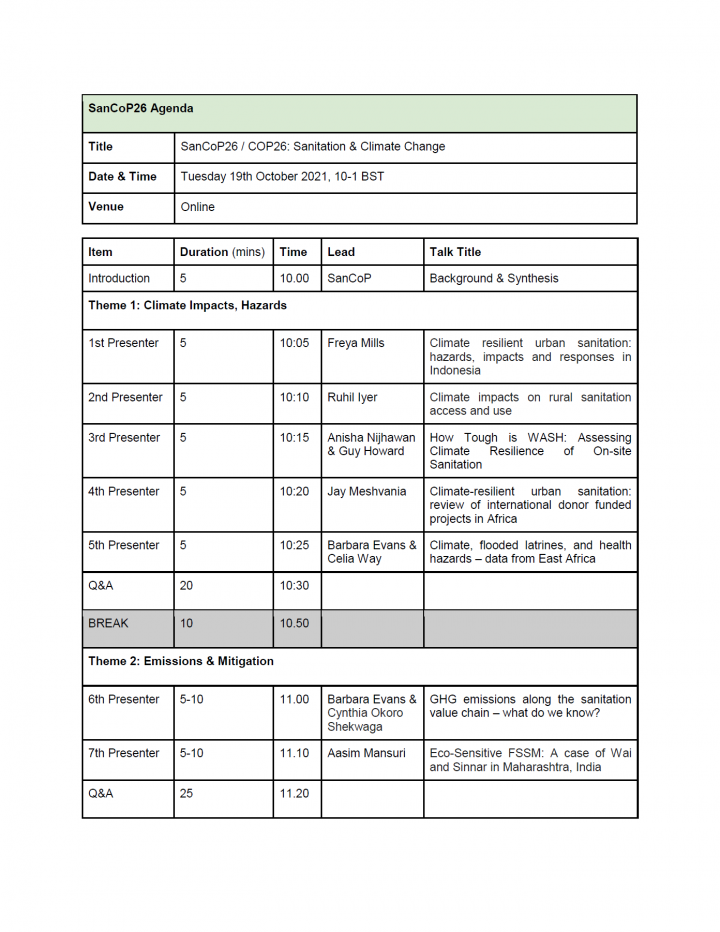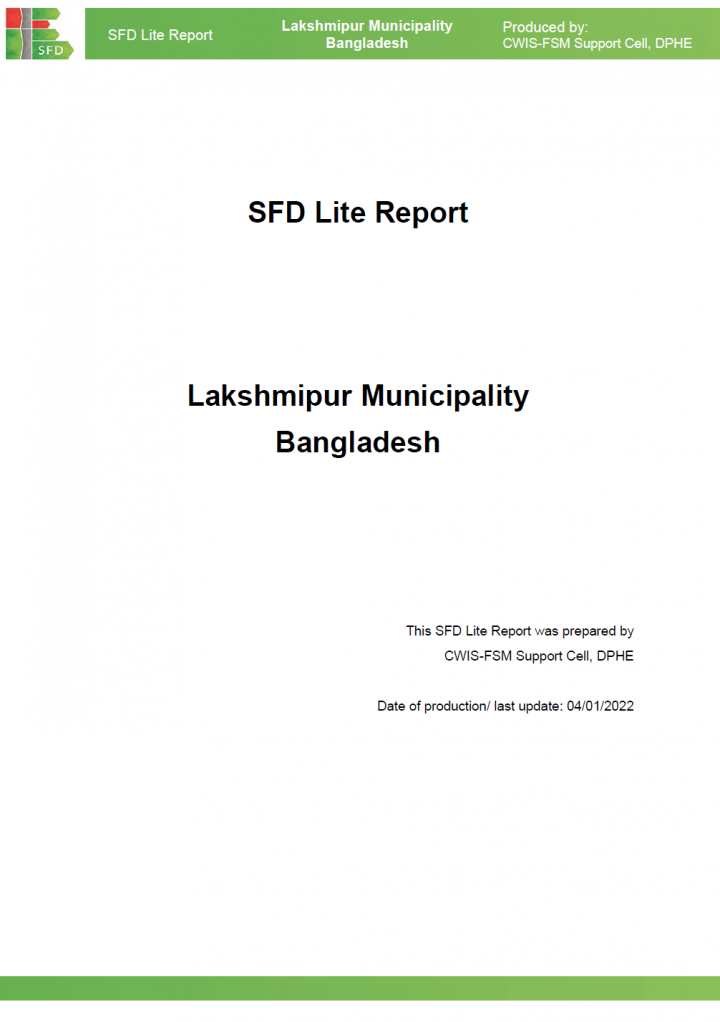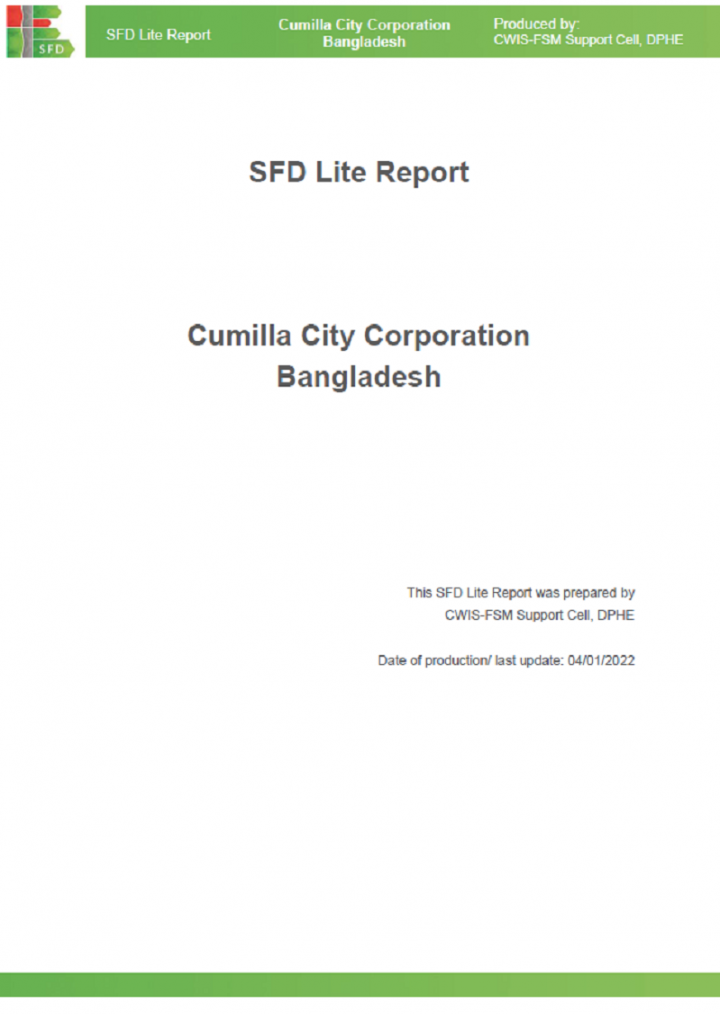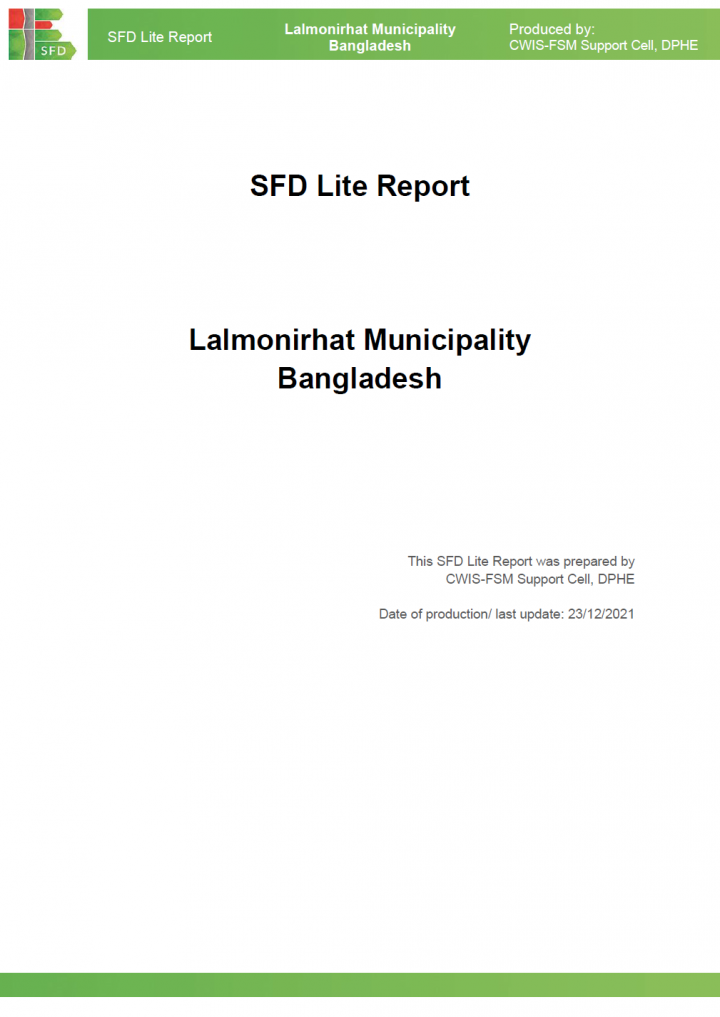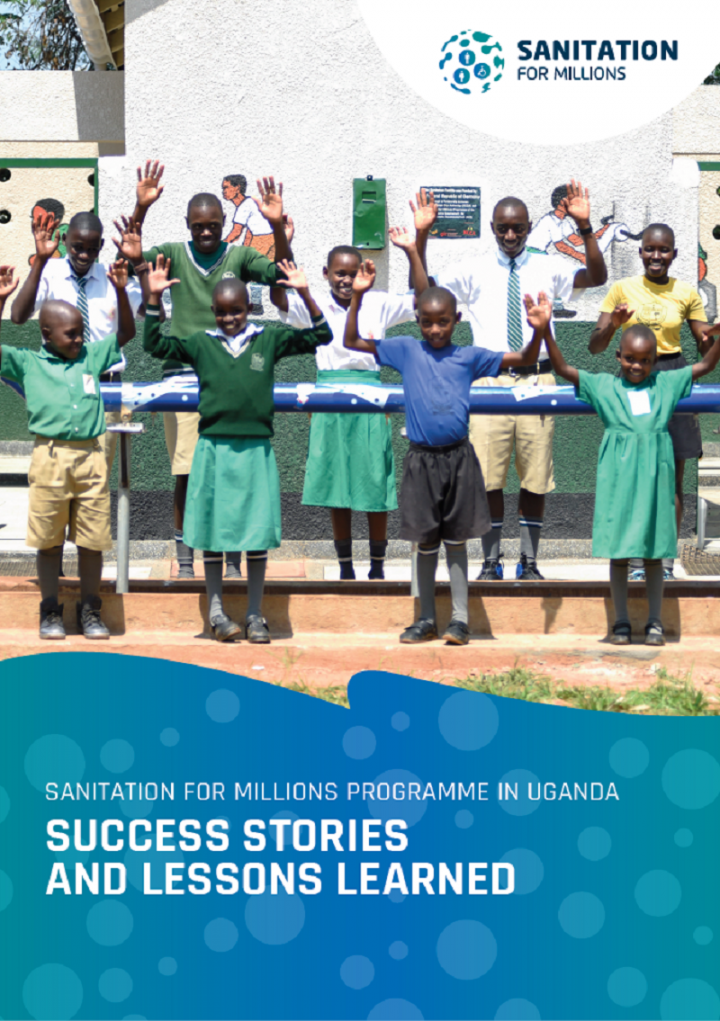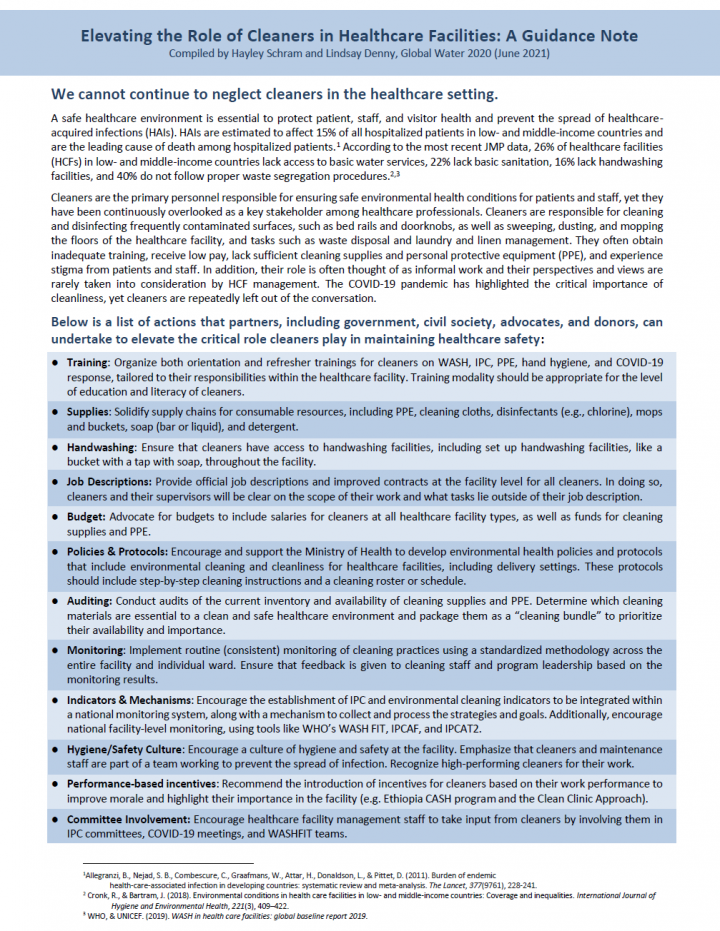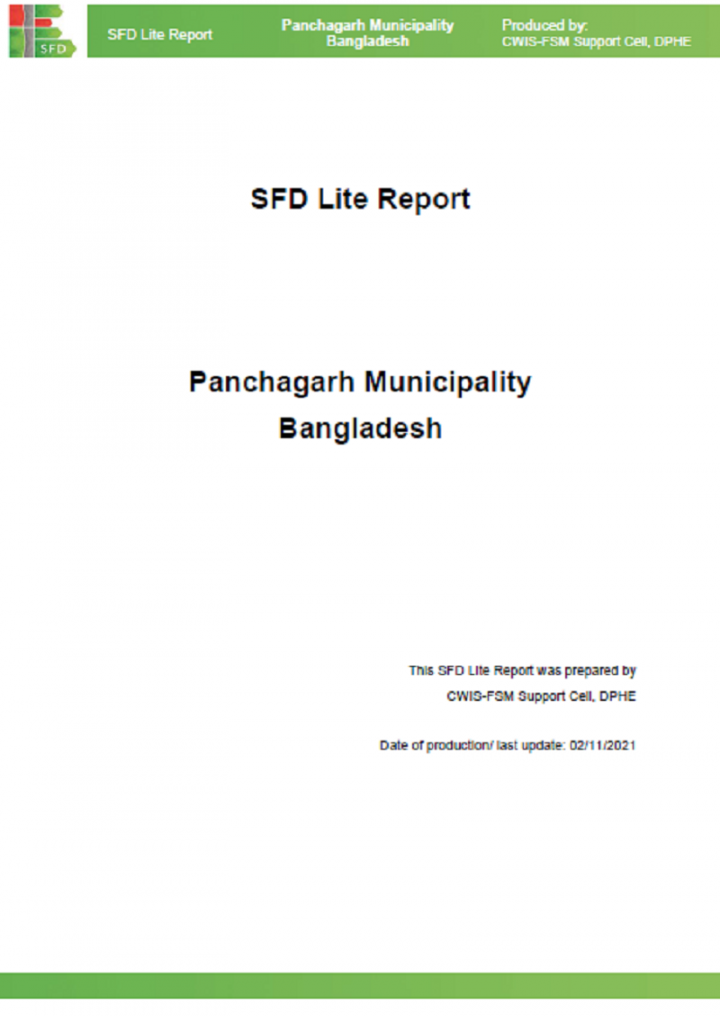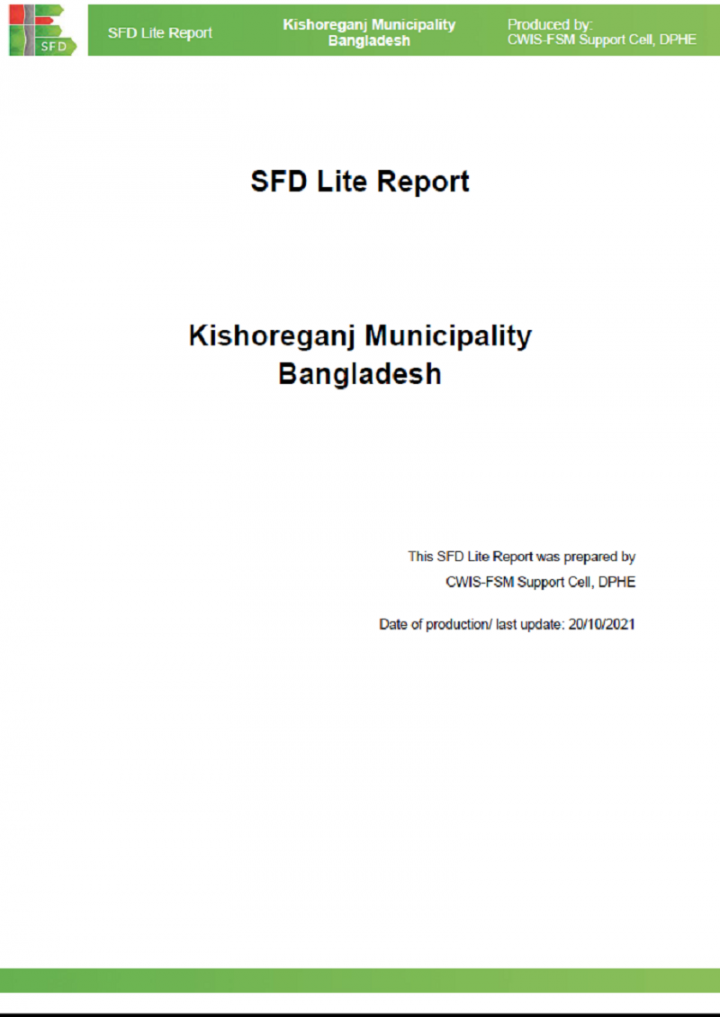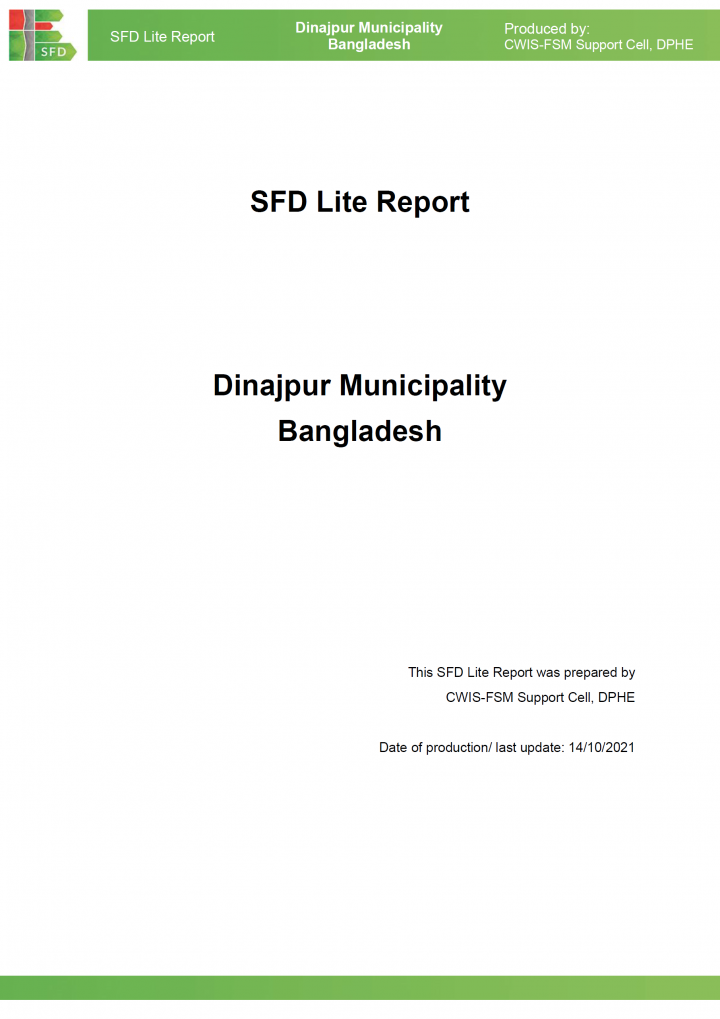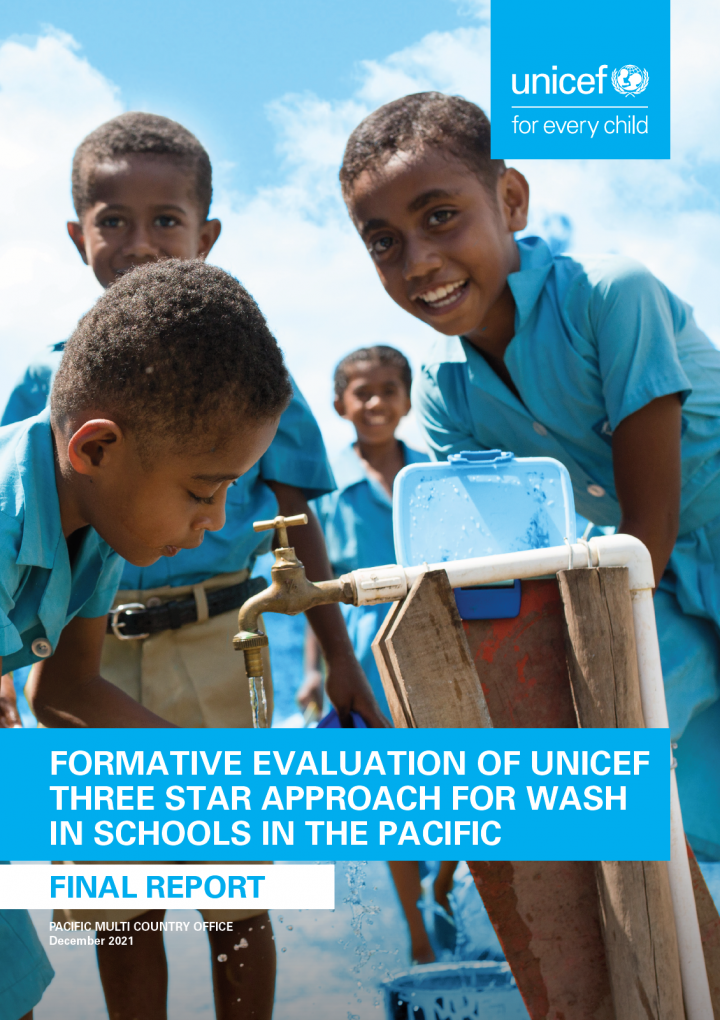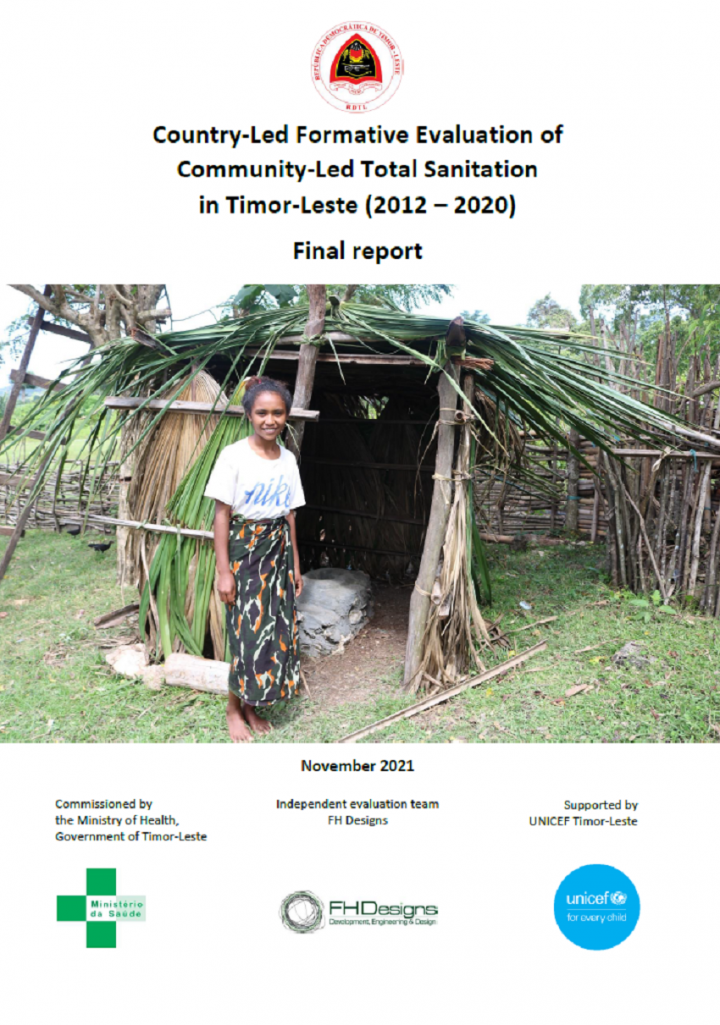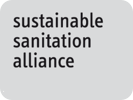UNICEF (2022) Integrating Sanitation and Hygiene to Support Polio Eradication in Afghanistan’s Slums
Improvements to sanitation and hygiene are known to reduce the transmission of the poliovirus. This field note reports the experience of implementing Afghan Context Community Led Total Sanitation (AC-CLTS) in an urban context within an integrated polio eradication project targeted to high-risk polio districts. The Ministry of Public Health, provincial Department of Public Health and UNICEF implemented an urban variant of AC-CLTS in two slums […]
Engel, L. and Monse, B. (2021) VIRTUAL MINI WinS-ILE REPORT 2021
The COVID-19 pandemic has impacted our lives since early 2020. Children suffer especially under the outbreak, as it is estimated that, globally, over one billion school children are staying home (as at June 2020) with a high number of children not continuing their education online. Nevertheless, the COVID-19 outbreak has been addressed and controlled in some countries, and gradually workplaces, public spaces and schools are […]
Archana Tripathi (2022) Sustainable waste management in Gram Panchayats – success stories and challenges
The document discusses SAAHAS's scale of rural intervention, its focus areas and success stories.
Brewer, T. (2021) UK ODA Cuts and FCDO Merger - Tim Brewer (Water Witness)
Presentation at the SANCOP meeting on 29 June 2021
SanCoP UK (2021) SanCoP 25 Introductory Presentation & Rapporteur Notes – SanCoP Committee & WaterWISER
Presentation at the SANCOP meeting on 29 June 2021
Thompson, J. and Iyer, R. (2021) How WASH Programming has Adapted to the COVID-19 Pandemic - Joseph Thompson and Ruhil Iyer (Institute of Development Studies, IDS)
Presentation at the SANCOP meeting on 29 June 2021
Dugange, A. (2021) Contribution of ODA on WASH Progress and Implication of the UK Cuts - Abel Dugange (Shahidi wa Maji, Tanzania)
Presentation at the SANCOP meeting on 29 June 2021
SanCoP UK (2020) SanCoP 24 Webinar Outline
SanCop Zoom Webinar Plan 18th June 2020 (9.30-11.15am) “Managing Uncertainty from COVID-19 in the UK WASH Sector: Reflections from SanCoP”
SanCoP UK (2021) SanCoP 25 Webinar Outline
Title: Towards SDG 6.2 – Reflecting on and Responding to the Pandemic and ODA cuts Date: 29 June 2021 11 a.m. to 1 p.m. Duration: 2 hours (Virtual)
SanCoP UK (2021) SanCoP 26 Webinar Outline
Title: SanCoP26 / COP26: Sanitation & Climate Change Date & Time: Tuesday 19th October 2021, 10-1 BST Venue: Online
CWIS-FSM Support Cell, DPHE (2022) SFD Lite Report Lakshmipur Municipality, Bangladesh
Lakshmipur was originally a sub-division of Lakshmipur district and the municipality was established in 1976. The town stands on the bank of the Rahmatkhali and is located 137 km south-east of Dhaka. The city is sub divided into 12 wards and 22 mahallas. Lakshmipur is one of the 53 district-level municipalities in the country. According to the population census in 2011 by the Bangladesh Bureau of […]
CWIS-FSM Support Cell, DPHE (2022) SFD Lite Report Cumilla City Corporation (vn 2022), Bangladesh
Cumilla City Corporation stands on the south bank of the Gumti River in Cumilla district. Cumilla (previously known as Comilla) is one of the fast-growing cities located beside the Dhaka Chittagong highway, 97 km south to Dhaka and 167 km north to Chittagong. Cumilla, one of the oldest towns of the sub-continent was declared a city corporation in the year 1864. Cumilla City Corporation was […]
CWIS-FSM Support Cell, DPHE (2021) SFD Lite Report Lalmonirhat Municipality, Bangladesh
Lalmonirhat is a municipality town and district headquarters of Lalmonirhat District in the division of Rangpur, Bangladesh. Lalmonirhat is a fast-growing city, which is 329.8 km away from the north of Dhaka. It is beside the Dharal River and it is well connected with road, water, and railways. It was declared Municipality in 1972. Lalmonirhat is one of the 53 district-level municipalities in the country. According […]
Sanitation for Millions Uganda implementation team (2021) Sanitation for Millions Programme in Uganda- Success stories and lessons learned
Sanitation for Millions is a global multi-donor programme to improve access to safe sanitation and hygiene with a focus on vulnerable and disadvantaged groups. More than one million people in 14 countries have already benefitted directly from Sanitation for Millions’ measures that include the construction of sanitary facilities, capacity development to ensure adequate use, operation and maintenance, behaviour change measures towards safe hygiene as well […]
Compiled by Hayley Schram and Lindsay Denny (2021) Elevating the Role of Cleaners in Healthcare Facilities: A Guidance Note
One of the largest constraints that cleaners experience is the lack of WASH, and formal training on IPC, PPE, and hand hygiene. A needs assessment study conducted in 56 healthcare facilities throughout Bangladesh, India, The Gambia, and Zanzibar reported that on average less than a third delivered formal training to their cleaning staff. 4 Training is essential in ensuring a safe and clean healthcare environment, […]
CWIS-FSM Support Cell, DPHE (2021) SFD Lite Report Panchagarh Municipality, Bangladesh
The Panchagarh District is in the northern part of Bangladesh. Panchagarh city, the district headquarter of Panchagarh is situated in Rangpur Division, Bangladesh. The city stands on the bank of Korotoya. The city is 415 km away from the capital city Dhaka. It is well connected with road, water, and railways. The town was declared Municipality in 1985. Panchagarh is one of the 53 district-level […]
CWIS-FSM Support Cell, DPHE (2021) SFD Lite Report Kishoreganj Municipality Bangladesh
Kishoreganj is a city and the district headquarters of Kishoreganj District in the division of Dhaka, Bangladesh. Kishoreganj is a fast-growing city, which is 97.8 km away from North-East of Dhaka. It is beside the Narashunda River and is well connected with road, water, and railways. It is one of the oldest towns in the sub-continent and was declared Municipality in 1869. Kishoreganj is […]
CWIS-FSM Support Cell, DPHE (2021) SFD Lite Report Dinajpur Municipality Bangladesh
Dinajpur, a city of north-western Bangladesh and the district headquarter of Dinajpur district is situated in Rangpur Division, Bangladesh. It is located 413 km Northwest of Dhaka. It is bounded by Punarbhaba River on the west. Dinajpur is historically and culturally a very important city in North Bengal. It is one of the oldest towns in the sub-continent and was declared Municipality in 1869. Dinajpur […]
UNICEF Pacific Multi Country Office (2021) Formative Evaluation of UNICEF Three Star Approach for WASH in Schools in the Pacific
The WASH in Schools (WinS) Three Star Approach (TSA) has been adopted in Fiji (from a pilot in 2015 but now is at scale), Kiribati (atoll island first implementation from 2015 to 2018), Solomon Islands (since 2016), in Vanuatu (since 2017) and 2018 introduction in the Federated States of Micronesia (FSM). The evaluation aims to understand whether WinS TSA is achieving the intended results and […]
Timor-Leste Ministry of Health and UNICEF Timor-Leste (2021) Country-Led Formative Evaluation of Community-Led Total Sanitation in Timor-Leste (2012 – 2020)
This evaluation examines a broad national programme of ‘community-led total sanitation’ (CLTS) style sanitation interventions conducted in Timor-Leste by the government, NGOs and multi-lateral and bi-lateral stakeholders from 2012 to 2020. It was commissioned by the Government of Timor-Leste (GoTL) Ministry of Health (MoH) in collaboration with UNICEF Timor-Leste. The evaluation was conducted by FH Designs between December 2019 and March 2021, a period which […]
